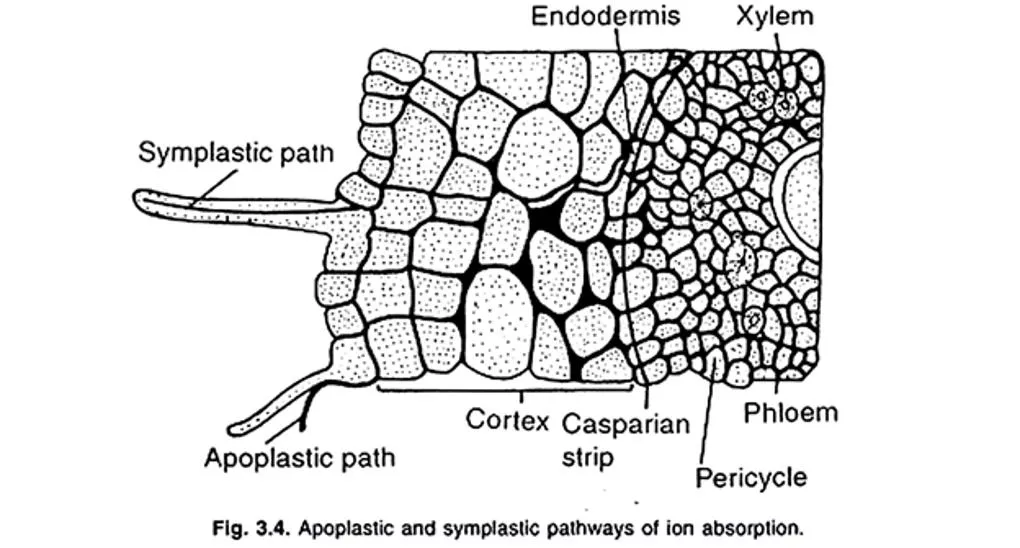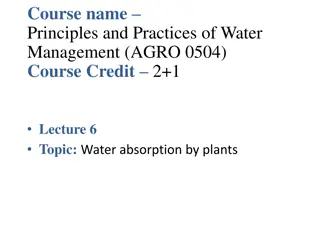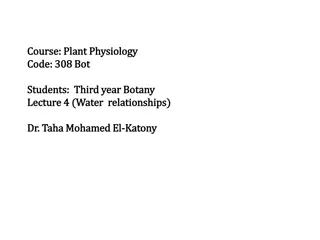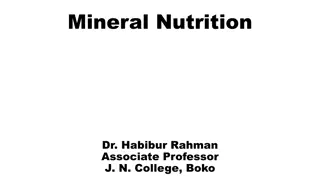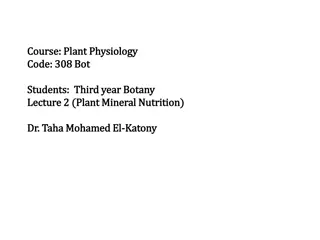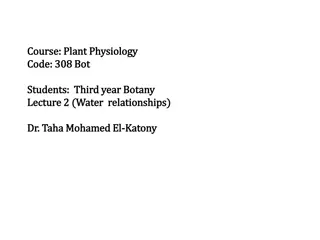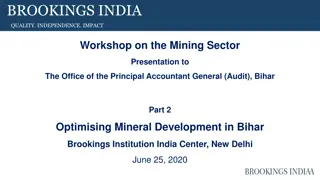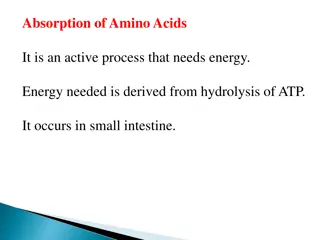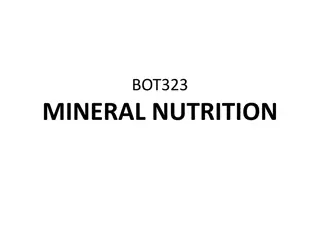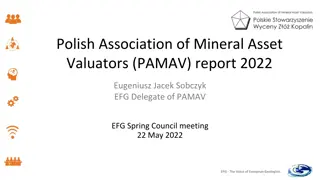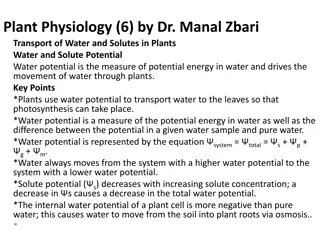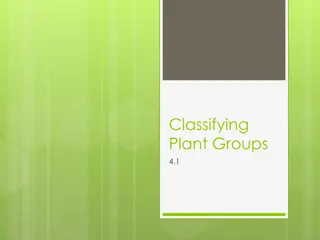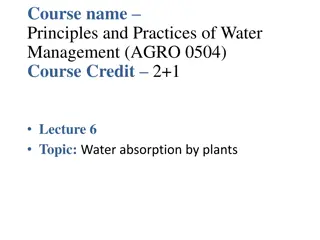Water and Mineral Absorption Pathways in Plants
Water absorption in plants occurs through two pathways - the apoplastic pathway and the symplastic pathway. Mineral salt absorption is a separate process, happening mainly in the meristematic regions of roots. Root cells selectively absorb ions through ion exchange, which is energetically favorable. These processes are essential for plant growth and nutrient uptake.
Download Presentation

Please find below an Image/Link to download the presentation.
The content on the website is provided AS IS for your information and personal use only. It may not be sold, licensed, or shared on other websites without obtaining consent from the author. Download presentation by click this link. If you encounter any issues during the download, it is possible that the publisher has removed the file from their server.
E N D
Presentation Transcript
Absorption of water takes place by two pathways, they are: (i) Apoplast pathway, and (ii) Symplast pathway.
(i) Apoplastic Pathway: This pathway, essentially involves diffusion, and mass flow of water from cell to cell through specs between cell wall polysaccharides. The water that enter the cell wall of epidermis move across cell wall of cortex, cytoplasm of endodermis, cell wall of pericycle, and finally accumulate in xylem vessels. (ii) Symplastic Pathway: In this pathway, water that enter the cytoplasm of epidermis move across endodermis and pericycle through plasmodesmata, and finally reach to xylem vessels. the cytoplasm, cortex,
ABSORPTION OF MINERAL SALTS Previously , it was thought that the absorption of mineral salts from the soil took place along with the absorption of water But it is now well established that the mineral salt absorption and water absorption are two different processes Mineral salts are absorbed from the soil solution in the form ions They are chiefly absorbed through the meristametic regions of the roots near the tips
However , some mineral salts may also be absorbed at other locations on the root surface Some times mineral salts are absorbed by the root hairs , zone of elongation depend upon availability of such minerals that high the
Plasma membrane of root cells is not permeable to all the ions It is selectively permeable All the ions of the same salt are not absorbed at equal rate but there is unequal absorption First step in the absorption of mineral salts is the Ion-exchange which does not require metabolic energy
Ion exchange The ions adsorbed on the surface of the walls or membranes of roots cells may be exchanged with the ions of same sign from the external solution For example the cation k+ of the external soil solution may be exchanged with H+ ions adsorbed on the surface of the root cells similarly an anion may be exchanged with OH+ ion
There are two theories of mechanism of ion exchange i) Contact Exchange Theory ii) Carbonic Acid Exchange Theory i) Contact Exchange Theory According to this theory, the ions adsorbed on the surface of root cells and clay particles (or clay micelles) are not held tightly but oscillate within small volume of space. If the roots and clay particles are in close contact with each other, the oscillation volume of ions adsorbed on root-surface may overlap the oscillation volume of ions adsorbed on clay particles, These ions adsorbed on clay particle may be exchanged with the ions adsorbed on root-surface directly without first being dissolved in soil solution
ii) Carbonic acid exchange theory According to this theory , the co2 released during respiration of root cells combines with water to form carbonic acid ( H3Co3) Carbonic acids dissociates in to H+ and an anion HCO 3- in soil solution These H+ ions may be exchanged for cations absorbed by the clay particles Thus the soil solution play a major role in carbonic acid exchange theory
The Carrier Concept: According to this theory the plasma membrane is impermeable to free ions. But some compound present in it acts as carrier and combines with ions to form carrier- ion-complex which can move across the membrane. On the inner surface of the membrane this complex breaks releasing ions into the cell while the carrier goes back to the outer surface to pick up fresh ion
The further process of the absorption of mineral salts may be of two types (1) Passive Absorption of Mineral Salts and (2) Active Absorption of Mineral Salts
Passive Absorption of Mineral Salts When the concentration of mineral salts is higher in the outer solution than in the cell sap of the root cells, the mineral salts are absorbed according to the concentration gradient by simple process of diffusion. This is called as passive absorption because it does not require expenditure of metabolic energy.


